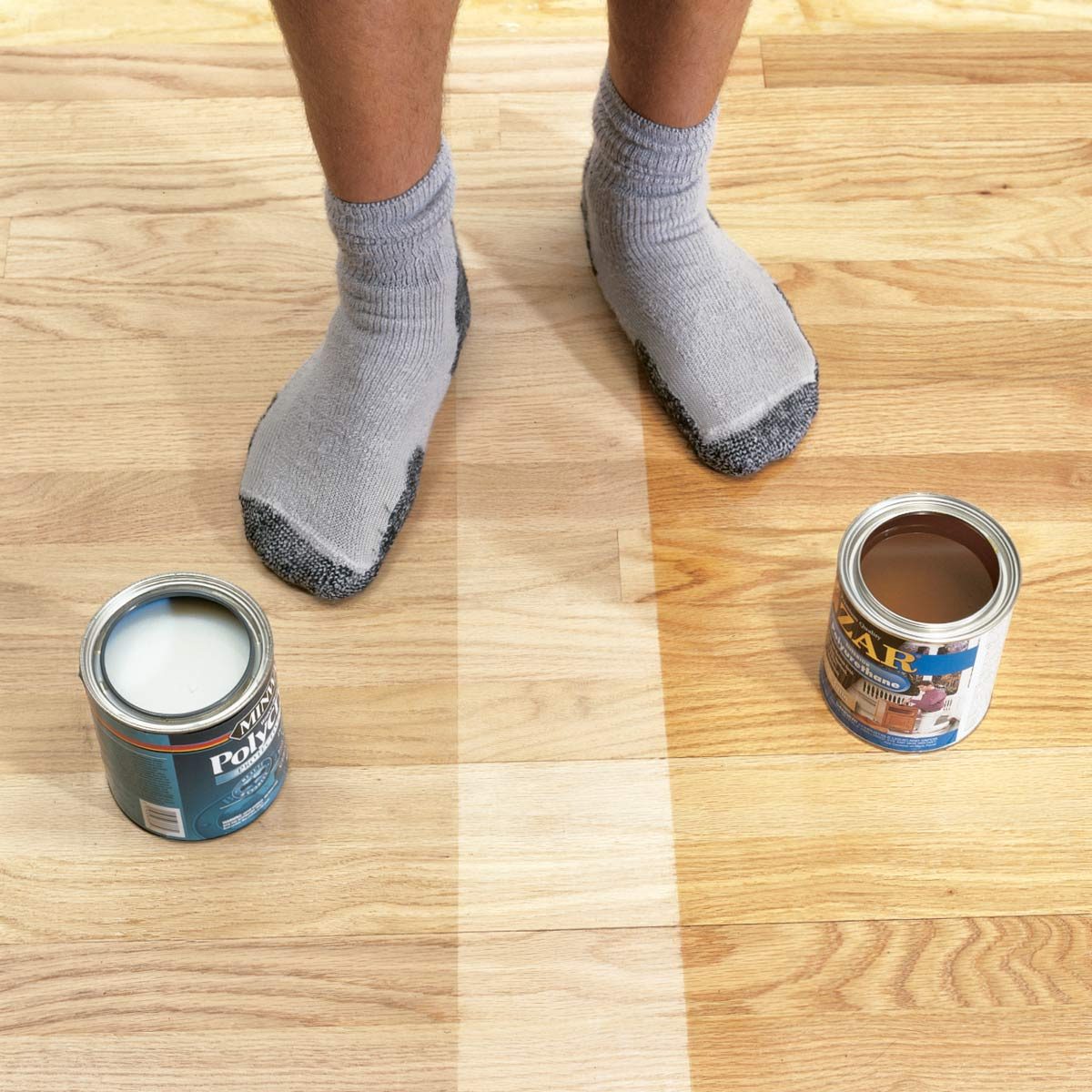Water-Based vs. Oil-Based Polyurethane
Water-based and oil-based polyurethane each offer good protection; the biggest difference is in appearance. Polyurethane is actually the most durable hardwood floor finish.
There’s debate over which finish is harder, but some experts maintain that hardness isn’t necessarily a good attribute of a floor finish. You want a finish that will flex along with the floor. And a super-hard finish shows scratches more readily. You’ll prolong the protective life of any finish by eliminating its No. 1 enemies: dirt and grit. Sweep or vacuum the floor often and put throw rugs in high-traffic areas.
ⓘ
Plus, check out these tips and techniques for applying polyurethane that produce virtually flawless results. They include where wipe-on poly is better than a roller, and the best way to control dust.
Water-Based Polyurethane
Pros
- Provides a clear finish with low odor.
- If you love the natural look of maple, apply a water-based (waterborne) polyurethane.
- Pro tip: They appear milky in the can, but go on clear and remain clear. They’ll slightly accent the character of your wood without giving it the amber tint of an oil-based poly. (However, some woods, like the oak shown, cry out for that amber tint.)
- Water-based finishes dry fast — most within two hours — so you can apply several coats in a day.
- Pro tip: If you start early enough, you can apply the recommended four coats and sleep in the room that night.
- Cleans up with water too.
Cons
- Water-based polys cost twice as much as oil-based polys.
- They won’t give wood the rich glow that oil-based polys impart; some even consider them cold looking.
- Some waterborne polys go on so clear that you’ll have to mark each swath of finish as you go.
- Most water-based polys contain only 30 to 35 percent solids, compared with the 45 to 50 percent solids in oil-based products.
- Pro tip: Since these solids create the protective finish, you need to apply four coats, as opposed to two or three.
- When applying polyurethane to floors, you may need to apply additional coats every two years or so.
Oil-Based Polyurethane
Pros
- Leaves an amber glow and requires fewer coats than water-based polyurethane.
- Less expensive than water-based polys.
- Contain 45 to 50 percent solids, which creates a more protective finish.
- Require less maintenance over time.
Cons
- The five-hour wait between coats and 12-hour wait after the last coat will put a bedroom out of commission for a few days.
- You’ll have to put up with a strong odor.




















